Determining the right tree cultivar for your backyard or landscaping project can be difficult, especially if you don’t know the differences between the forest pansy redbud vs eastern redbud. Closely related to one another, there are still some benefits and key features to discover about both of these trees. But in what ways are they similar, and in what ways are they different?
In this article, we will compare and contrast the forest pansy redbud with the eastern redbud so that you can fully understand the differences between them. We will address what these trees look like and where they grow best, as well as what they are typically used for. Let’s get started and talk all about redbud trees now!
Comparing Forest Pansy Redbud vs Eastern Redbud
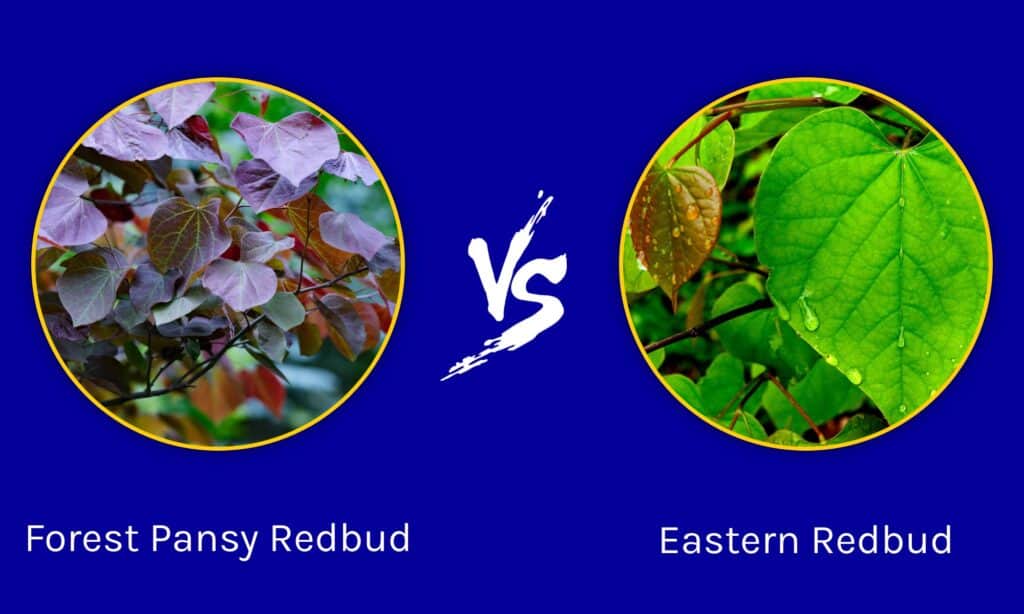
| Forest Pansy Redbud | Eastern Redbud | |
|---|---|---|
| Plant Classification | Cercis canadensis ‘Forest Pansy’ | Cercis canadensis |
| Description | Reaches up to 30 ft tall and 35 ft wide, with sporadically spreading branches. The leaves are purplish red, with beautiful pink flowers in the springtime. Bark is dark and grows more textured as the tree ages | Reaches up to 30 ft tall and 30 ft wide, with spreading branches and a short trunk. The leaves are a light green color, turning yellow in the fall and many pinkish red blossoms are produced in the spring. Bark is a dark gray, with some texture |
| Uses | Prize for its three-season beauty and deer resistance. Makes an ideal ornamental tree in a variety of landscaping projects | Popular ornamental tree for its size and ability to grow in shady locations. Also great for attracting certain pollinators and butterfly species |
| Origin and Growing Preferences | Native to eastern North America; grows best out of full sunlight and can’t handle drought well | Native to eastern North America; grows best in partial shade, with plenty of moisture and annual rainfall |
| Hardiness Zones | 5 through 9 | 4 through 9 |
Key Differences Between Forest Pansy Redbud vs Eastern Redbud
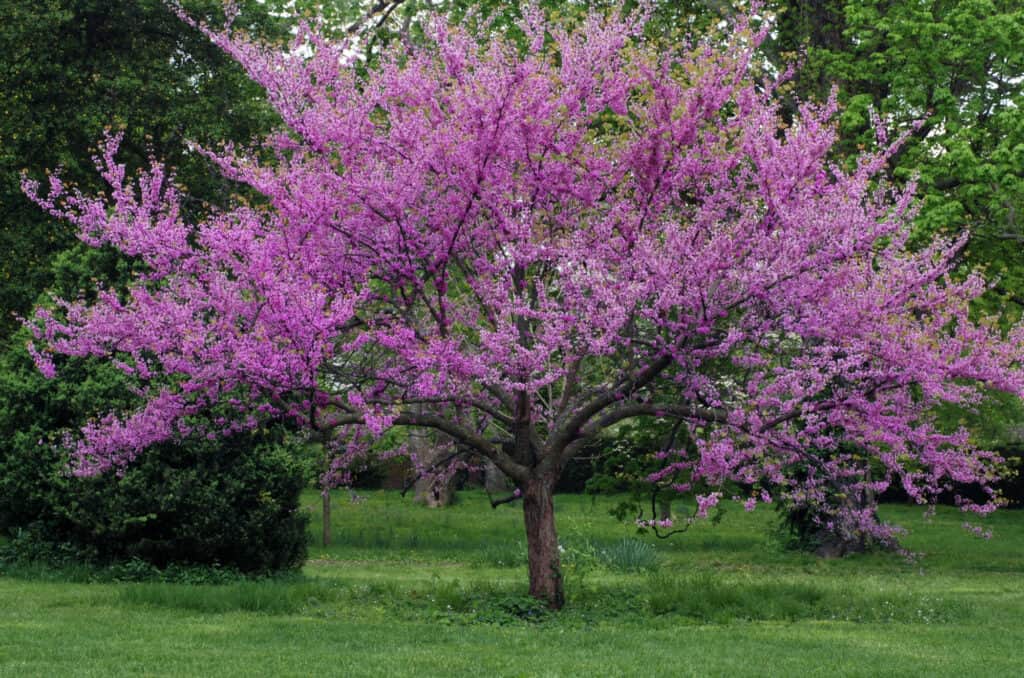
The forest pansy redbud tree has beautiful purplish leaves for most of the year, while other eastern redbud trees only have green or yellow leaves.
©Marie C Fields/Shutterstock.com
There are a few key differences between forest pansy redbuds and eastern redbuds. For example, eastern redbud trees have a more upright growth habit compared to forest pansy redbuds. The forest pansy redbud has leaves in a striking purplish red color, while eastern redbud leaves are light green. Finally, forest pansy redbuds are not as cold or drought tolerant compared to eastern redbuds.
Let’s go over all of these differences in more detail now.
Forest Pansy Redbud vs Eastern Redbud: Classification
When it comes to the classification of these two trees, you may notice some overlap when comparing forest pansy redbuds and eastern redbuds. Both belonging to the Cercis or redbud genus, the forest pansy redbud is a specific cultivar or variety of eastern redbud. Therefore, you can classify both trees similarly, with eastern redbuds classified as Cercis canadensis, and forest pansy redbuds classified as Cercis canadensis ‘Forest Pansy’.
Forest Pansy Redbud vs Eastern Redbud: Description
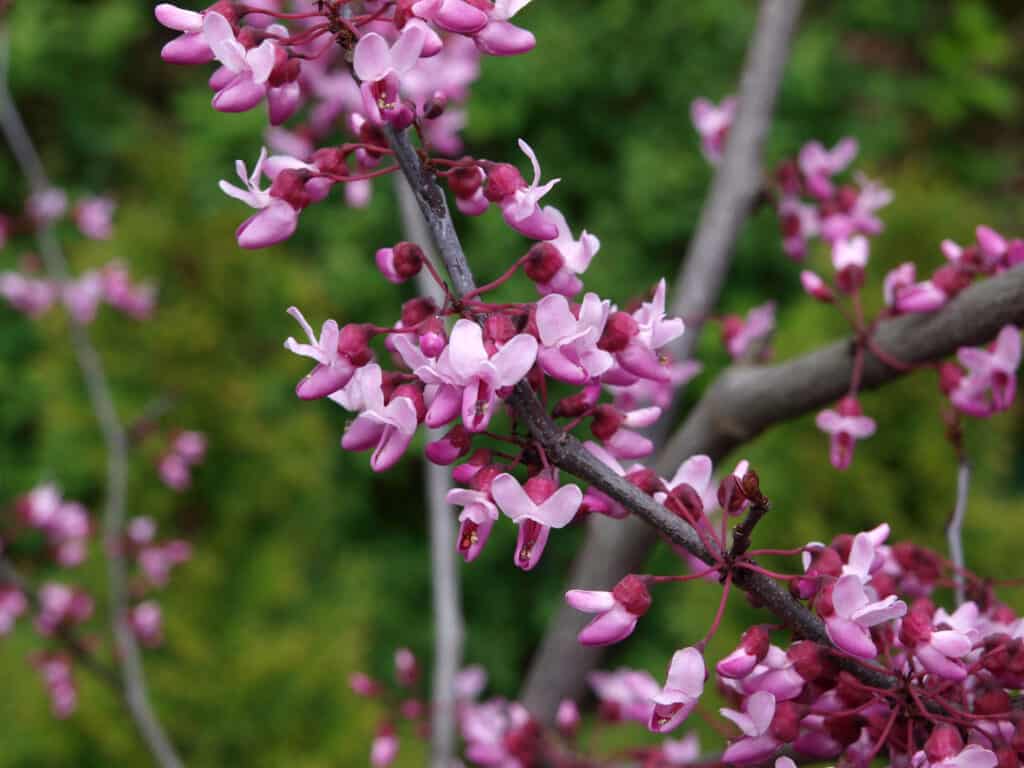
Eastern redbuds grow in a more upright fashion compared to the wider, more sprawling growth habit of the forest pansy redbud.
©Bildagentur Zoonar GmbH/Shutterstock.com
Given their close relation to one another, it can be very difficult to tell a forest pansy redbud cultivar apart from an eastern redbud tree. However, there is one key difference in their physical appearance, likely leading to the desire for the forest pansy redbud in the first place. The forest pansy redbud tree has beautiful purplish leaves for most of the year, while other eastern redbud trees only have green or yellow leaves.
Besides this key physical difference, eastern redbuds grow in a more upright fashion compared to the wider, more sprawling growth habit of the forest pansy redbud. Both of these trees produce their signature reddish pink blooms in the springtime, and they both have gray bark that only grows more textured as the trees age. However, the difference in their leaves is the primary reason the forest pansy redbud exists as an eastern redbud cultivar.
Forest Pansy Redbud vs Eastern Redbud: Uses
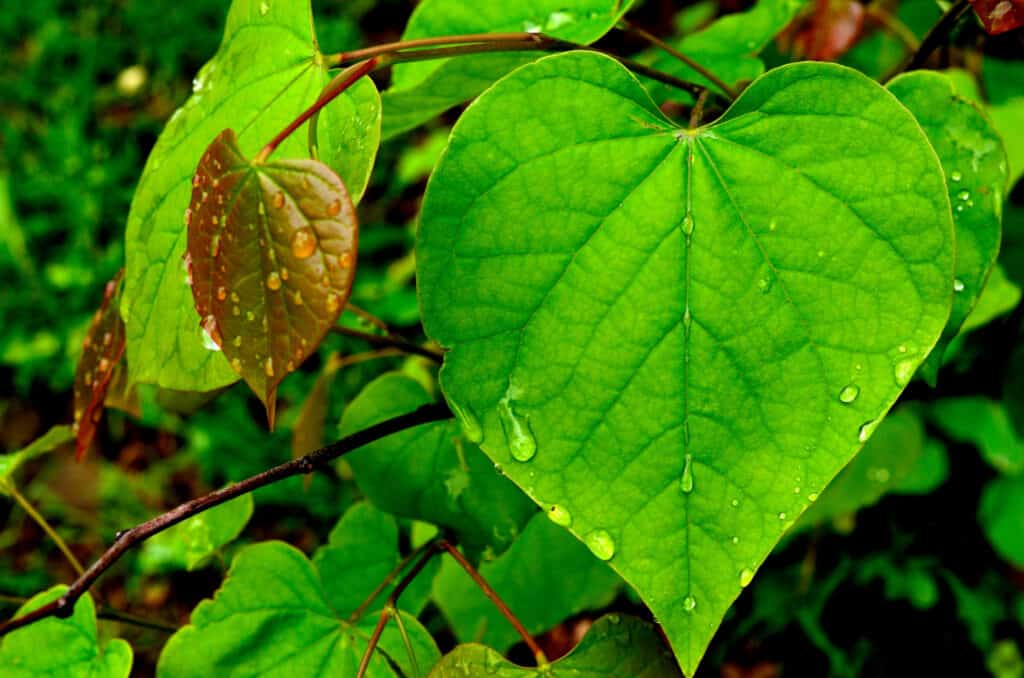
Forest pansy redbuds provide three-season color, while eastern redbuds only change color in the fall.
©Malachi Jacobs/Shutterstock.com
You can use eastern redbud trees and forest pansy redbud trees in interchangeable ways. Extremely popular when used as ornamental or landscaping trees, forest pansy redbuds provide three-season color, while eastern redbuds only change color in the fall. However, eastern redbuds are necessary food for a variety of butterfly species and other pollinators, while forest pansy redbuds are deer resistant.
Forest Pansy Redbud vs Eastern Redbud: Origin and How to Grow
Given that they are closely related, forest pansy redbuds and eastern redbuds have similar origins and growth habits. Both slow-growing trees, eastern redbuds and forest pansy redbuds originated in the eastern United States and Canada. When it comes to where they grow best, planting your forest pansy redbud or your eastern redbud in a shady location that stays relatively moist is a great place to start!
Forest Pansy Redbud vs Eastern Redbud: Hardiness Zones
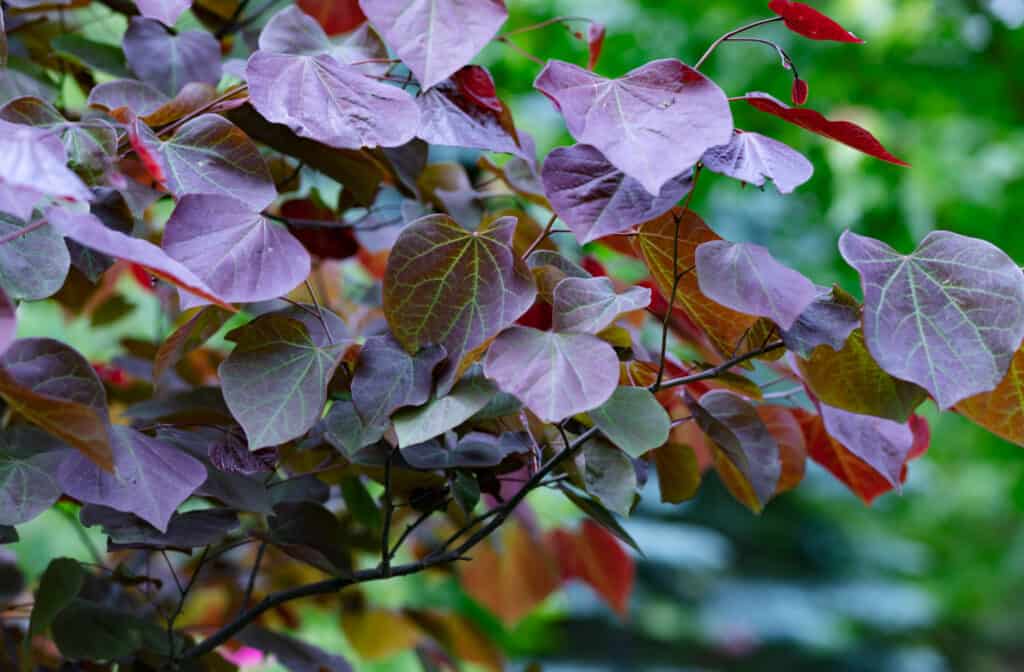
When it comes to comparing these two trees, the eastern redbud is more cold and drought tolerant than the forest pansy redbud cultivar.
©Molly Shannon/Shutterstock.com
The final difference between the eastern redbud tree and the forest pansy redbud tree lies in their hardiness zones and where in the world you can best grow them. When it comes to comparing these two trees, the eastern redbud is more cold and drought tolerant than the forest pansy redbud cultivar. Looking at the figures in more detail, the forest pansy redbud is best grown in hardiness zones 5 through 9, while the eastern redbud grows best in hardiness zones 4 through 9.
The photo featured at the top of this post is © Bildagentur Zoonar GmbH/Shutterstock.com
Sources
- Propagation of Eastern Redbud (Cercis canadensis) by Stem Cuttings is Influenced by Clone and Date of Cutting Collection / Published June 1, 2009 / Accessed September 22, 2022
Thank you for reading! Have some feedback for us? Contact the AZ Animals editorial team.







